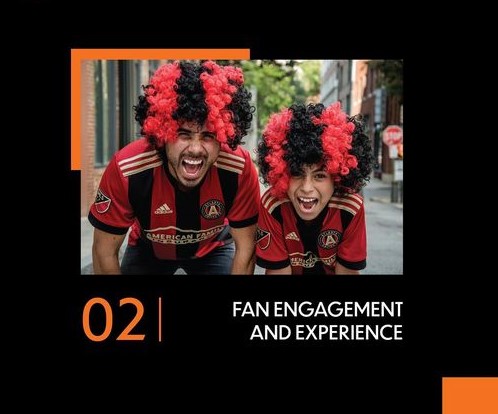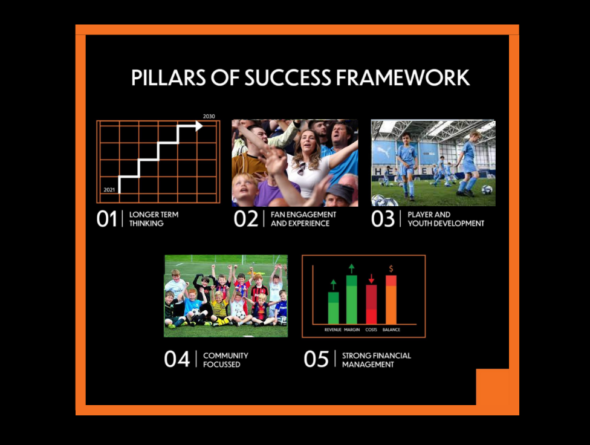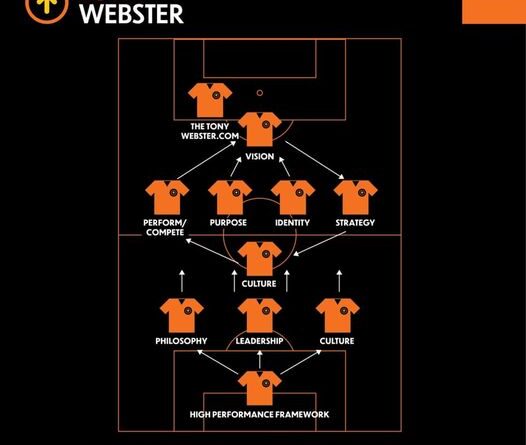As Football looks to the future and the post-pandemic landscape, surely now is the time to return to putting fans at the centre of the club and all the benefits that brings. The outlook for attendances seems to be mixed, some people believe numbers will naturally drop due to personal financial reasons and the fact that people’s habits having changed, there are now health factors to consider and potential nervousness of mass gatherings. Listening to Mark Catlin, CEO at Portsmouth, speak recently on the Fan Engagement pod, he expects to see a 10 to 15% drop in season ticket holders next season who will never return.
However, some believe there will be an increased appetite to attend games, starved of live action and the excitement that comes with it.
Typically match day attendances are driven by on field success or discounted ticket prices. This model is flawed and clearly has no upside potential; a long held view of Mark Bradley, The Fan Experience Company and one I completely agree with.
Whatever the natural demand to attend matches will be, clubs have the power to seize the moment by engaging fully with fans. Looking from a positive and optimistic viewpoint, this phrase is worth considering; “COVID-19 is the best thing to happen to my club because…”,
To complete the sentence, I would say “… because it has made us look at how we operate and refocus on our major stakeholders, the fans.”
I’ve spoken previously about a whole organisation approach, one that takes into consideration all aspects of the club. The largest stakeholder in any club, if not financially, but certainly emotionally, is the fan base and these fans should be a key factor in all decisions made by the club. The assumption may be that clubs do care about their fans, that they do engage with them and do place them at the centre of their strategy. Sadly, this is rarely the case. The top clubs have a different landscape given their fan bases and stadiums are usually sold out.
Away from the top clubs and certainly in the lower leagues, fans are important in terms of revenue, but they are also much more than that. Fans should be considered customers on the one hand, but also allies, partners and advocates on another. Larger crowds, a big football family and a sense of belonging to the club, with everyone in and around the club all pulling together in the same direction, provides an increased chance of success both on and off the field and the wider community. Brighton & Hove Albion’s approach is explained by Paul Barber, CEO & Deputy Chairman, “I want to be treated like a customer and recognised as a fan”.
So where to start? For me, the starting point is back to basics and asking the question: “what is a fan?” This might seem irrelevant or an obvious question or maybe an easy one to answer, but in the modern day, fans come in all different guises, ages, levels of interest, ethnicity, locations and engage through different channels. Certainly, streaming of live games through the pandemic has engaged with fans far and wide who otherwise would not have been involved with a specific club, and each will enjoy different relationships with the club. This is basic business development: “know your market” and “know your audience.”
Understanding what a fan is will determine and drive how you engage with that fan and how you improve their experience either at a game, watching online or in their wider relationship with the club. Obvious definitions of a fan may be the season-ticket holders, the fan who goes to every home and away game, then maybe the occasional fans who come to one or two games a season, others that bring the family, corporate partners, some long distance and watch online, only interacting online and the list goes on. Understanding the different categories of fans is a process that clubs should go through and then tailor activity and offers to all categories. “The social and digital environment has enabled fans to challenge the existing ways of being a fan and perhaps therefore it’s breaking down the barriers to fandom that previously existed.” – Professor Simon Chadwick, Salford Business School
How to build a fan base without success on the pitch or discounted ticket prices. There are a number of aspects to this but at the very core, I believe is the identity of the club. What does the club stand for and how can fans connect with the club and the club’s identity? This is not just in a strapline or marketing slogan, but something that should be at the very core and fabric of the club, and the city in which it plays. Fans want to, and need to feel a real connection to the club, to share its values, resonate and understand what the club is trying to achieve. We are talking about creating and building lifelong relationships. Sir Bobby Robson, described a club as “Not the building or the directors or the people who are paid to represent it. It’s not the television contracts, get-out clauses, marketing departments or executive boxes. It’s the noise, the passion, the feeling of belonging, the pride in your city. It’s a small boy clambering up the stadium steps for the very first time, gripping his father’s hand, gawping at the hallowed turf beneath him and, without being able to do a thing about it, falling in love”.
The next point to consider is communication and two-way communication with the fans. There are very few clubs that actively and meaningfully listen to their fans or even ask their fans their opinion. However challenging this may be, given the numbers involved you have to find a mechanism or vehicle for that two way communication between the fans and the club. Without it you cannot truly all be aligned. Some clubs that are doing very well at this are Plymouth Argyle, Portsmouth, Wycombe Exeter and Doncaster, which all have open transparent communication with fans.
Another concept is to have a community development officer, and some clubs do have an officer heading this activity. This is focused around engaging with the wider community and developing relationships with schools, with colleges, with individual groups or associations within the city and forging close partnership-based relationships for mutual benefit.
In summary, it is essential to consider your fan base, who are they, understand and know them well. The landscape has changed and the approach to fans needs to adapt and embrace the opportunity presented. Think longer term, look beyond discounting and acceptance of attendance numbers due to poor on field results. Place the club at the heart of the city or town, engage with the wider community and make them proud. Be open and transparent in communication and club activities. Technology allows for a longer distance audience and building an international following should be part of the plan. Digitalization enables tracking of fan interaction and provides intelligence to improve your offer and learn from fans interactions.
Writer Michael Calvin describes it so well, “Fans are the unpaid extras, part of the theatre. The games power supply, the source of heat and light, sound and fury. They’re the future and help make football living history”. Time for clubs to remember and re-instate that close relationship.
There is so much more to say on this subject and this serves as some initial food for thought. Fans want to be part of their club and clubs should look to them to build back better together in the post pandemic future.



